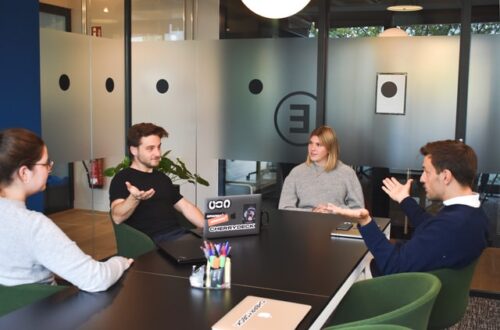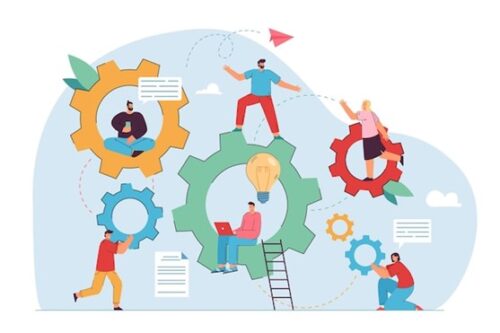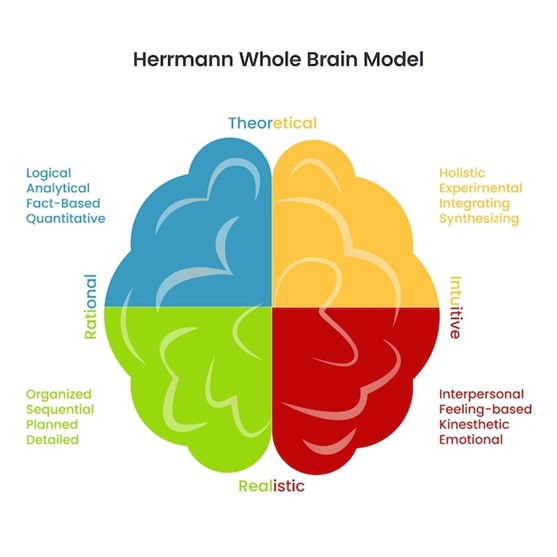Conflict is an inevitable part of any workplace, but it doesn’t have to be a negative force. In fact, when managed effectively, workplace conflicts can lead to innovation, growth, and stronger relationships among team members. However, workplace conflict resolution requires a deep understanding of the underlying causes and the ability to communicate and collaborate effectively. This is where the Herrmann Brain Dominance Indicator (HBDI) can be a game-changer.
Understanding the Herrmann Brain Dominance Indicator (HBDI)
The Herrmann Brain Dominance Indicator (HBDI) is a powerful tool that helps individuals and teams understand their thinking and communication preferences. It is based on the concept of whole-brain thinking, which suggests that individuals have different thinking styles and preferences. The HBDI measures these preferences across four quadrants: analytical, practical, relational, and experimental. By completing the HBDI assessment, individuals gain insights into their dominant thinking preferences and how they can leverage them to improve communication and problem-solving.
The Herrmann Whole Brain Model
The Herrmann Whole Brain Model is a visual representation of the four quadrants of the HBDI. Each quadrant represents a different thinking preference and has distinct characteristics. The analytical quadrant is logical and detail-oriented, the practical quadrant is organized and focused on efficiency, the relational quadrant is empathetic and people-oriented, and the experimental quadrant is creative and open to new ideas. Understanding these preferences is crucial in conflict resolution, as it allows individuals to recognize and appreciate different perspectives.
Benefits of using the HBDI for Conflict Resolution
Using the HBDI for conflict resolution offers several benefits. Firstly, it helps individuals and teams understand themselves and others better, fostering empathy and improving communication. By recognizing and appreciating different thinking preferences, conflicts can be reframed as opportunities for collaboration and growth. Secondly, the HBDI provides a common language and framework for discussing conflicts, allowing for more productive and focused conversations. Finally, the HBDI helps individuals identify their blind spots and areas for development, leading to personal and professional growth.
How the HBDI can help Identify Communication and Thinking Preferences in the Workplace
In the workplace, conflicts often arise due to miscommunication and misunderstandings. The HBDI can play a crucial role in identifying communication and thinking preferences to mitigate these conflicts. By understanding their own and others’ thinking preferences, individuals can adapt their communication styles to ensure their message is received and understood effectively. For example, someone with a dominant analytical preference may prefer detailed and logical explanations, while someone with a dominant relational preference may respond better to stories and personal anecdotes. By tailoring their communication approach, conflicts can be minimized, and misunderstandings can be avoided.
Applying the HBDI in Conflict Resolution Scenarios
When faced with a conflict, applying the HBDI can provide a structured approach to resolution. Firstly, all parties involved should complete the HBDI assessment to gain insights into their thinking preferences. Then, they can come together to share their results and discuss how their preferences influence their communication and problem-solving approaches. This open and honest dialogue creates a foundation of understanding and empathy. Next, the conflicting parties can analyze the conflict from multiple thinking perspectives, leveraging the strengths of each thinking preference to find a mutually beneficial solution. By recognizing the value of diverse thinking styles, conflicts can be reframed as opportunities for growth and innovation.
Successful Conflict Resolution using the HBDI
Successful conflict resolution using the HBDI requires a commitment to open-mindedness, empathy, and effective communication. It is essential to create a safe and inclusive environment where all parties feel heard and respected. By actively listening to different perspectives and seeking to understand, conflicts can be deescalated and transformed into collaborative problem-solving sessions. The HBDI provides a framework for identifying and leveraging the strengths of each thinking preference, ensuring that all voices are heard and valued. Ultimately, successful conflict resolution using the HBDI leads to stronger relationships, increased productivity, and a more harmonious workplace.
Training Programs for using the HBDI in Conflict Resolution
To effectively utilize the HBDI for conflict resolution Sydney, Melbourne, Brisbane, Perth, Adelaide and across Australia, organizations can invest in training programs that help individuals and teams understand and apply the principles of whole-brain thinking. These programs provide participants with the knowledge and skills to interpret HBDI results, facilitate discussions, and apply whole-brain thinking in conflict resolution scenarios. By equipping individuals with the necessary tools and techniques, organizations can foster a culture of collaboration and empower employees to resolve conflicts in a constructive and productive manner.
Limitations and Considerations when using the HBDI for Conflict Resolution
While the HBDI is a valuable tool for conflict resolution, it is important to recognize its limitations. The HBDI is just one model of understanding thinking preferences and should not be viewed as a definitive assessment of an individual’s capabilities. It is also essential to consider cultural and contextual factors that may influence thinking and communication styles. Additionally, the HBDI should be used as a complementary tool alongside other conflict resolution strategies and techniques. It is not a standalone solution but rather a framework for understanding and appreciating different perspectives.
Conclusion: Harnessing the Power of the HBDI for Effective Workplace Conflict Resolution
In conclusion, workplace conflicts can be harnessed as opportunities for growth and innovation when managed effectively. The Herrmann Brain Dominance Indicator (HBDI) provides a powerful framework for understanding thinking preferences and communication styles. Enabling individuals and teams to resolve conflicts in a constructive and collaborative manner. By leveraging the strengths of each thinking preference and fostering empathy and understanding, conflicts can be reframed as opportunities for growth and collaboration. Organizations can further enhance conflict resolution efforts by investing in training programs that empower employees to apply the principles of whole-brain thinking. By harnessing the power of the HBDI, organizations can create a more harmonious and productive workplace.
If you’re interested in improving conflict resolution in your workplace Sydney, Melbourne, Brisbane, Perth, Adelaide and across Australia, consider implementing the Herrmann Brain Dominance Indicator (HBDI). Contact us, WHS and Training Compliance Solutions today to learn more about how the HBDI can transform your workplace dynamics and foster a culture of collaboration and innovation.












